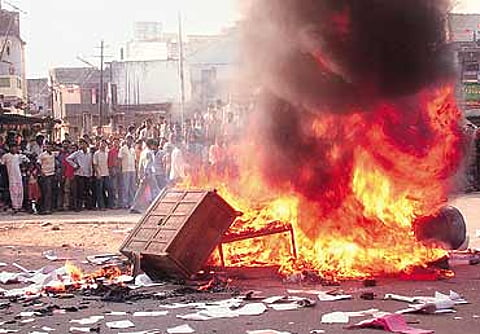2004: 2000 MW
2005: 3800 MW
2006: 4200 MW
2007: 5500 MW
***

By 1995, when the Sena-BJP alliance made the costly Enron electricity a poll issue and wrested power from the Congress, it was clear that the Dabhol plant would not augment capacity to the extent envisaged. Even if it did, the rates would be unaffordable for MSEB. But efforts to set up other power plants or allow private players to set up theirs were tardy. The maximum demand (restricted after load-shedding) galloped by almost 3,000 MW for five years from 1999-2000, while the installed capacity was more or less constant at around 12,000 MW. Energy experts say the state should have ideally added 300-350 MW in each of those years, but had banked almost entirely on Dabhol.
The small additions to the state's installed capacity was indeed marginal compared to the demand—just around nine per cent in five years. Close to three lakh new domestic and industrial connections were added every year, and serious load-shedding started in 2002-03. Just how severe the shortage would become was beyond imagination. From a shortfall of 2,000 MW three years ago, the state is now grappling with a 5,500 MW deficit. Over-reliance on Enron-Dabhol ruined MSEB's traditional demand-supply equation. Even as officials predicted a seven per cent annual increase in demand, the political will to kickstart new power plants was missing. The Godbole committee, looking into the power situation, recommended demand management and immediate attention to transmission and distribution losses amounting to a monstrous 39 per cent of the total supply.
"I know people are facing hardships and losing money as well but we have no alternative to severe load-shedding," admits energy minister Walse-Patil, "but we are now augmenting capacity." If all the projects on the drawing board go on stream as scheduled, Maharashtra should add around 4,700 MW to its installed capacity sometime in 2010. Dispelling the darkness that engulfs the state will take a special effort.
Tags